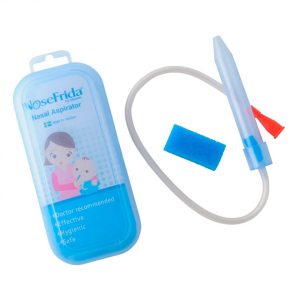Breathing is such a natural physiological function for humans, that we only truly realize its importance when it is affected for some reason. As a warning sign of a possible cold or flu or even an allergic reaction among other reasons, a stuffy nose is a very uncomfortable symptom.
Nasal congestion is a reaction of the mucous membranes when attacked by germs and allergens. But it can also be caused by sinusitis attacks, rhinitis, sudden climate changes, and also by structural disorders1. When caused by infectious reasons, the symptom is usually temporary, which is different from anatomical cases, like a deviated septum where the breathing difficulty, especially at bedtime, is constant.
Nasal congestion is a symptom that can affect babies, children, and even the elderly, and the best course of action is to find out the cause of the congestion in order to solve it once and for all. Many people who suffer from this discomfort end up abusing decongestants without a medical prescription, leading to dependency. Overuse of decongestants causes vasoconstriction and can lead to more serious problems. The use of medication for any issue, including a stuffy nose in children, should only be prescribed by a pediatrician, along with the appropriate method of use.
How to Relieve Nasal Congestion?
If it’s already incredibly frustrating for adults to try to sleep and fail because of a stuffy nose, imagine what it’s like for children? For us parents, seeing the child feeling sleepy and becoming irritable and agitated from not being able to rest is even more worrying. To relieve this annoying symptom, there’s an extensive list of remedies that don’t always work as well as hoped. The famous “saline solution” for the nose, which is used daily to clean the mucous of babies and children, can provide some immediate relief, but the congestion soon returns. The ideal is to find the cause, and when nasal congestion in children is a constant symptom, it should be investigated. For congestion caused by weather changes, colds, or flu symptoms, a great solution is nasal aspirators, such as Nosefrida.
At first glance, parents might find it a bit “gross” to suck out nasal mucus. But this aversion disappears after understanding how it’s used and how it actually works. Since it is used with the help of a filter, the mucus being sucked out never comes into contact with the mouth and provides immediate relief to the baby or child. It is the most recommended method by most pediatricians nowadays2. For nasal congestion caused by an allergic reaction, the best way to resolve it is to keep the child away from the triggering allergen. No medication or nasal aspirator will solve the problem if the child continues to be in contact with what is causing the congestion. The use of humidifiers and nebulizers is also recommended, as well as drinking plenty of water to help thin the mucus.
Places with air conditioning and heaters should be avoided as they dry out the mucous membranes even more, increasing nasal congestion. At bedtime, use a higher pillow or elevate the head of the child’s mattress or crib. This will help the child breathe better and sleep more peacefully.
See also: Pneumonia in Children – How to Spot It?
Photos: George Hodan, Personal Collection TF












